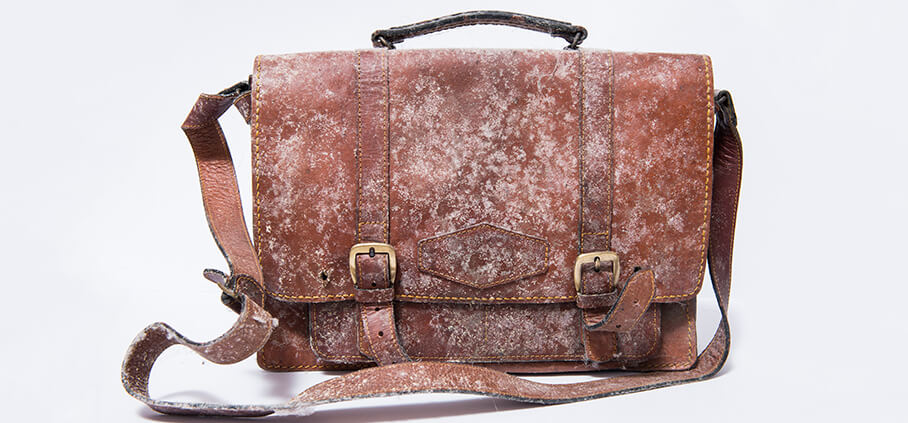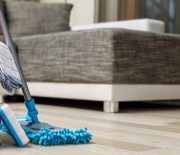Last update: 1 year ago

Leather sofas and armchairs can give your study or living room that classy and luxurious feel and look. We can all agree to that. But if the room is somewhat on the dark side, with very little sunlight coming in throughout the day, mould problems can arise. Add condensation and poor ventilation, for whatever reason, and you’ll be looking at ruined-looking furniture at some point in the future. But if things have already come to that “no-turning-back” point, you’re probably wondering about what you can do to restore the once beautiful look of your sitting area set. Well, you’ve come to the right place because we’ll share with you everything that is to know about how to remove mould from leather.
Why is mould dangerous and must be cleaned off straight away?
Mould and mildew don’t just ruin any items they infest with their fast-developing spores. Fungus is simply dangerous for people. If undealt with, it can cause the following health problems, as well as damage to various items in the affected rooms and your entire home.
Mould can:
- Irritate the skin, eyes, nose and throat (especially of infants, and elderly or sensitive adults)
- Trigger various allergic reactions
- Exacerbate asthma in susceptible persons
- Cause other long-term respiratory problems
- “Eat through” and destroy organic fabrics and upholstery
- Damage leather furnishings and items
- Affect adversely other types of interior surfaces
So, leaving the issue unaddressed can cost you and your family in the long run, from having to combat illness to needing to replace ruined valuable possessions, clothing and furniture.
But what exactly causes mould?
As hinted above, moisture, dampness, lack of sunlight and bad air circulation in rooms can all promote the development of mildew and mould. Still, the spores have to appear from somewhere, right? Well, as they are microscopic and easily airborne, spores can quickly find their way into your home, where the right conditions just facilitate their spread and build-up onto natural materials and all sorts of surfaces that might be contaminated with organic matter, which mould feeds on. The onset can begin in areas with high humidity, such as basements and crawl spaces under floors, for instance. Or you may bring mould spores accidentally with outdoor clothing, working boots and coats, second-hand furniture and whatnot.
How to remove mould from leather easily and for good
Right then, you’ve come to the main part of our post. Here’s what you need to know about how to clean mould off leather, be it your gorgeous handbag, expensive boots or luxurious leather settee. Below, we list the steps to follow, as well as the tools and a plethora of cleaning agents that can be all effective for removing mould from leather items. So, choose according to your preferences and feel free to combine more than one method if the leather surface has been severely affected by this type of dangerous fungus.
Tools and supplies:
- Germicidal (antimicrobial) soap
- Saddle soap (suitable for untreated leather)
- Diluted vinegar (or lemon juice)
- Diluted alcohol
- Mould inhibitor
- Leather conditioner
- Soft nylon brush (or vacuum cleaner brush attachment)
- Clean cloths
- Protective gear (goggles, face mask, gloves)
It’s important to do the cleaning outdoors if you can, although we understand that moving a bulky leather sofa and armchairs outside may not be always possible, especially if you live in an apartment. So, if that’s the case, don’t forget to open the windows before tackling the task.
So, here is what you need to do to get mould off leather:
- Put on your safety gear.
Make sure to protect yourself because as soon as you start cleaning the mould from the leather, spores will get agitated and released in the air. And this way, they enter your lungs.
- Brush off the mould carefully from the affected leather.
Use a soft brush or the brush attachment of your vacuum cleaner to carefully remove most of the mould this way.
- Dip a cloth or a sponge in the cleaning solution of your choice.
A water solution with antimicrobial soap is perfect for the job. However, diluted vinegar also has strong antifungal properties.
- Test the method, first, on a small, inconspicuous area.
This applies especially if you go for the diluted alcohol technique or you decide to use lemon juice, which has mild bleaching properties. For that reason, we don’t recommend using any type of bleach on leather for cleaning off mould and mildew, regardless of its proven fungicidal powers.
- Repeat if needed by using the same or a different cleaning agent.
A safe suggestion would be to treat the mouldy spots with soapy water and then, repeat the cleaning with a vinegar solution for optimal results.
- Dry well with a clean soft cloth.
Use a clean cloth to dry the leather item well.
- Apply a mould inhibitor for leather.
This step can be actually further up in our list, as this type of store-bought product is a mould remover, as well. You only need to spray it on a cloth and wipe down the leather surface without too much pressure. If the area is badly affected, you can spray the mildew inhibitor directly on the sofa and give it a wipe after a minute or two. The cleaning agent is suitable for both finished and unfinished leather pieces of furniture. Let the item dry before proceeding with the last step. Applying a mould remover/inhibitor after using any of the techniques mentioned further up can only strengthen the effectiveness of the results, as well as prevent mould from reappearing anytime soon in the future.
- Condition your leather sofa or personal item.
To finish off the cleaning process, gently treat your leather settee or another type of leather item with an appropriate conditioning or leather rejuvenating product.
How to prevent mould from growing on leather and other materials
Inspecting and cleaning regularly your leather furniture and items are a good course of action to prevent mould from developing and spreading. But you should also tackle and eliminate all the known reasons behind mould and mildew growth, in order to protect your valuable leather possessions and other types of surfaces in your home. Some of the things you need to address or keep in mind are:
- Air rooms and/or use dehumidifiers where needed;
- Keep condensation to a minimum;
- Use silica gel to absorb moisture in storage units;
- Repair leaks and maintain your plumbing system in good order;
- Avoid drying laundry inside;
- Don’t bring in damp and dirty working clothing and shoes;
- Waterproof and insulate areas, prone to dampness;
- Discard mouldy items beyond repair straight away.
Do you need a helping hand?
Hire a professional cleaning team!
Takeaways
- Mould in your home is dangerous for your health and can ruin various surfaces and items, including such made from leather.
- Mould and mildew spores develop mainly in damp, darker spaces with poor air circulation.
- Mould is a fungus that needs organic waste to feed on, hence, it easily grows and spreads on anything organic (wood, leather, natural fabrics, etc.) or surfaces that are contaminated with organic matter.
- There are numerous natural and commercial cleaning agents that can remove mould from different materials. But DO NOT use bleach on leather.
- Sometimes, you’re better off calling for professional help. We can also assist you.
- Prevention is a key in the battle to control mould and mildew in your home.
As you now know what the best way is to get mould off leather, why not tell us in the comments if any of the techniques we shared worked for you?









